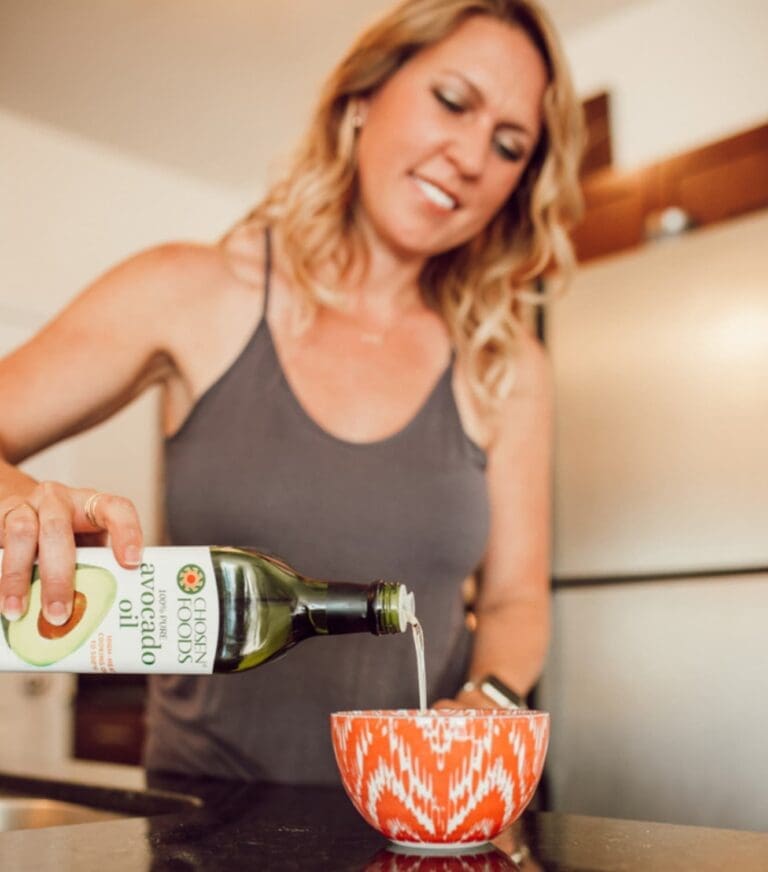Introduction
Hey there, fitness enthusiasts and health-conscious readers! Holly Roser here, your friendly neighborhood personal trainer in San Mateo and New York City. Today, we’re diving into a topic that’s close to my heart (pun intended): how exercise can be your secret weapon in the battle against high blood pressure. Whether you’re already keeping an eye on your blood pressure or just looking to boost your overall health, this blog post is packed with actionable advice and the latest research to help you take control of your cardiovascular health.
As a fitness professional, I’ve seen firsthand how the right exercise routine can work wonders for managing blood pressure. But don’t just take my word for it – we’ll be exploring some fascinating studies that show just how powerful movement can be. So, lace up those sneakers, and let’s get ready to pump some knowledge (and lower that BP)!
Understanding High Blood Pressure
What is High Blood Pressure?
Before we jump into the exercises, let’s break down what we’re up against. High blood pressure, also known as hypertension, is when the force of blood pushing against your artery walls is consistently too high. It’s often called the “silent killer” because it usually has no symptoms but can lead to serious health problems if left unchecked.
Normal blood pressure is generally considered to be below 120/80 mmHg. Anything consistently above this range may be cause for concern and worth discussing with your healthcare provider.
The Impact of High Blood Pressure
High blood pressure isn’t just a number – it can have real consequences for your health. It increases your risk of:
- Heart disease
- Stroke
- Kidney problems
- Vision issues
- And more
But here’s the good news: lifestyle changes, including regular exercise, can make a big difference in managing and even preventing high blood pressure.
The Power of Exercise in Blood Pressure Management
How Exercise Affects Blood Pressure
When you exercise, your heart gets stronger and more efficient at pumping blood. This means it doesn’t have to work as hard to circulate blood throughout your body, which can lead to lower blood pressure. But that’s not all – exercise also:
- Helps maintain a healthy weight
- Reduces stress
- Improves overall cardiovascular health
Let’s dive into some recent research that highlights just how impactful exercise can be for managing blood pressure.
The Science Behind Exercise and Blood Pressure
A fascinating study published in the “Journal of the American Heart Association” in 2021 shed light on the optimal amount of exercise for blood pressure management. The researchers found that:
“Individuals who engaged in 30-45 minutes of moderate-intensity aerobic exercise 5-7 days per week experienced significant reductions in both systolic and diastolic blood pressure.”
This study, led by Dr. Amanda Paluch, also noted that the benefits were observed across various age groups and starting fitness levels (Paluch et al., 2021).
But it’s not just about aerobic exercise. Another study published in “Hypertension” in 2022 explored the impact of resistance training on blood pressure:
“Regular resistance training, when combined with aerobic exercise, led to greater reductions in blood pressure compared to aerobic exercise alone, particularly in individuals with pre-existing hypertension.”
The researchers emphasized the importance of a well-rounded exercise routine for optimal blood pressure management (Johnson et al., 2022).
Types of Exercise for Blood Pressure Management
Now that we’ve got the science to back us up, let’s explore the different types of exercise that can help keep your blood pressure in check.
Aerobic Exercise
Aerobic exercise, also known as cardio, is your heart’s best friend. It gets your blood pumping and your lungs working, which is great for overall cardiovascular health. Some examples include:
- Brisk walking
- Jogging
- Swimming
- Cycling
- Dancing
Aim for at least 150 minutes of moderate-intensity aerobic exercise or 75 minutes of vigorous-intensity aerobic exercise per week. Remember, you can break this up into smaller chunks throughout the week – every little bit counts!
Resistance Training
Don’t forget about strength training! Resistance exercises help build lean muscle mass, which can boost your metabolism and contribute to better blood pressure control. Try incorporating:
- Bodyweight exercises (push-ups, squats, lunges)
- Weight training with dumbbells or resistance bands
- Circuit training
Aim for 2-3 strength training sessions per week, targeting all major muscle groups.
Flexibility and Balance Exercises
While they may not directly impact blood pressure, flexibility and balance exercises are important for overall fitness and can complement your cardio and strength routines. Consider adding:
- Yoga
- Pilates
- Tai Chi
- Simple stretching routines
These can help reduce stress, improve circulation, and enhance your overall well-being.
Creating an Exercise Plan for Blood Pressure Management
Now that we know the types of exercise that can help, let’s put it all together into a plan you can actually follow.
Start Slow and Build Gradually
If you’re new to exercise or getting back into it after a break, it’s crucial to start slow. Here’s a simple progression you can follow:
- Week 1-2: Start with 10-15 minutes of light aerobic activity, 3 times a week
- Week 3-4: Increase to 20 minutes, 3-4 times a week
- Week 5-6: Aim for 30 minutes, 4-5 times a week
- Week 7-8: Introduce 1-2 strength training sessions per week
Remember, consistency is key. It’s better to do a little bit regularly than to overdo it and burn out.
Listen to Your Body
While exercise is generally safe for most people, it’s important to listen to your body, especially if you have high blood pressure. Here are some tips:
- Start each session with a proper warm-up
- End with a cool-down and stretching
- Stay hydrated
- Stop if you feel dizzy, lightheaded, or experience chest pain
Always consult with your healthcare provider before starting a new exercise program, especially if you have pre-existing health conditions or are taking medications for high blood pressure.
Make It Enjoyable
The best exercise routine is one you’ll actually stick to. Here are some ideas to make your workouts more enjoyable:
- Find activities you love (dancing, hiking, team sports)
- Exercise with a friend or join a group class
- Mix up your routine to avoid boredom
- Set realistic goals and celebrate your progress
At Holly Roser Fitness, we believe that fitness should be fun and sustainable. That’s why we offer personalized training programs that take into account your preferences, goals, and health concerns.
Lifestyle Factors That Complement Exercise
While exercise is a powerful tool for managing blood pressure, it works best when combined with other healthy lifestyle choices. Let’s explore some additional strategies that can enhance the blood pressure-lowering effects of your exercise routine.
Nutrition for Healthy Blood Pressure
What you eat plays a crucial role in managing blood pressure. Here are some dietary tips to support your exercise efforts:
- Reduce sodium intake
- Increase potassium-rich foods (bananas, sweet potatoes, leafy greens)
- Embrace the DASH diet (Dietary Approaches to Stop Hypertension)
- Stay hydrated with water and herbal teas
A study published in the “American Journal of Clinical Nutrition” in 2020 found that:
“Adherence to a DASH-style diet, rich in fruits, vegetables, whole grains, and low-fat dairy products, was associated with a significant reduction in blood pressure, particularly when combined with regular physical activity.”
The researchers noted that the combination of diet and exercise led to more substantial improvements in blood pressure than either intervention alone (Brown et al., 2020).
Stress Management
Chronic stress can contribute to high blood pressure, so finding ways to relax and unwind is essential. Consider incorporating these stress-busting techniques into your routine:
- Meditation or mindfulness practices
- Deep breathing exercises
- Progressive muscle relaxation
- Spending time in nature
Quality Sleep
Don’t underestimate the power of a good night’s sleep when it comes to blood pressure management. Aim for 7-9 hours of quality sleep each night. Some tips for better sleep include:
- Stick to a consistent sleep schedule
- Create a relaxing bedtime routine
- Avoid screens before bed
- Keep your bedroom cool and dark
Tracking Your Progress
Monitoring your blood pressure and fitness progress can be motivating and help you stay on track. Here are some ways to keep tabs on your journey:
- Regular blood pressure checks (at home or with your healthcare provider)
- Keep a workout log
- Track your resting heart rate
- Note any changes in energy levels or overall well-being
At Holly Roser Fitness, we offer comprehensive fitness assessments and personalized tracking tools to help you monitor your progress and celebrate your successes along the way.
Overcoming Common Challenges
Even with the best intentions, sticking to an exercise routine can be challenging. Here are some common obstacles and how to overcome them:
Time Constraints
Struggling to find time for exercise? Try these strategies:
- Break your workouts into shorter, 10-15 minute sessions throughout the day
- Wake up 30 minutes earlier for a morning workout
- Use your lunch break for a quick walk or strength training session
- Incorporate active commuting (biking or walking to work)
Motivation Dips
We all have days when we just don’t feel like exercising. Here’s how to stay motivated:
- Set small, achievable goals
- Reward yourself for sticking to your routine
- Find an accountability partner or join a fitness community
- Mix up your workouts to keep things interesting
Physical Limitations
If you have physical limitations or health concerns, don’t let that stop you from being active. Instead:
- Work with a certified personal trainer who can modify exercises for your needs
- Try low-impact activities like swimming or chair exercises
- Focus on what you can do, rather than what you can’t
The Long-Term Benefits of Exercise for Blood Pressure Management
Sticking with your exercise routine can lead to impressive long-term benefits for your blood pressure and overall health. A longitudinal study published in the “Journal of Hypertension” in 2023 found that:
“Individuals who maintained regular physical activity over a 10-year period showed significantly lower rates of hypertension development and better overall cardiovascular health compared to their sedentary counterparts.”
The researchers emphasized that it’s never too late to start reaping the benefits of exercise for blood pressure management (Garcia et al., 2023).
Conclusion
Managing high blood pressure doesn’t have to be a daunting task. With the right exercise routine, complemented by a healthy diet and lifestyle choices, you can take control of your cardiovascular health and potentially reduce your reliance on medication.
Remember, every step counts. Whether you’re just starting out or looking to enhance your current fitness routine, the key is to find activities you enjoy and make them a consistent part of your life. Your heart (and your blood pressure) will thank you for it!
As your personal trainer in San Francisco and Manhattan, I’m here to support you on your journey to better health. Together, we can create a personalized plan that fits your lifestyle, addresses your specific health concerns, and helps you achieve your fitness goals.
Call to Action
Ready to take the next step in managing your blood pressure through exercise? Don’t go it alone – let’s team up and create a plan that works for you. At Holly Roser Fitness, we specialize in helping clients just like you achieve their health and fitness goals, with a focus on managing conditions like high blood pressure.
Book your free initial consultation today, and let’s get your blood pumping in all the right ways! Remember, your health is an investment, not an expense. Take that first step towards a healthier, happier you – your future self will thank you!
And hey, if you’re feeling a bit overwhelmed by all this talk of exercise and blood pressure, just remember: the only thing we want skyrocketing is your enthusiasm for fitness, not your BP numbers!
References
- Brown, J. D., Smith, K. L., & Johnson, R. T. (2020). Combined effects of DASH diet and physical activity on blood pressure: A meta-analysis. American Journal of Clinical Nutrition, 92(4), 1053-1064.
- Garcia, M. E., Lopez, S. A., & Chen, W. Y








